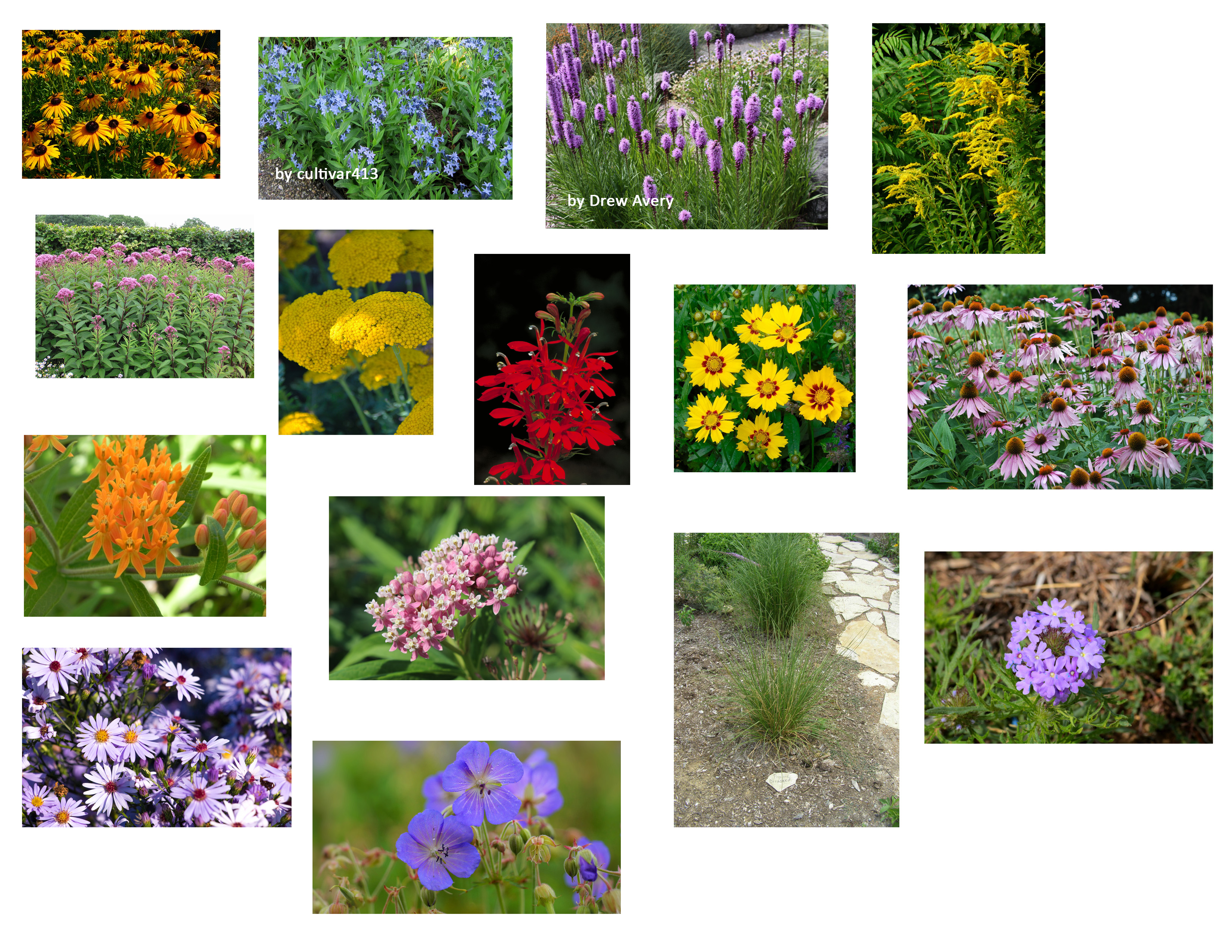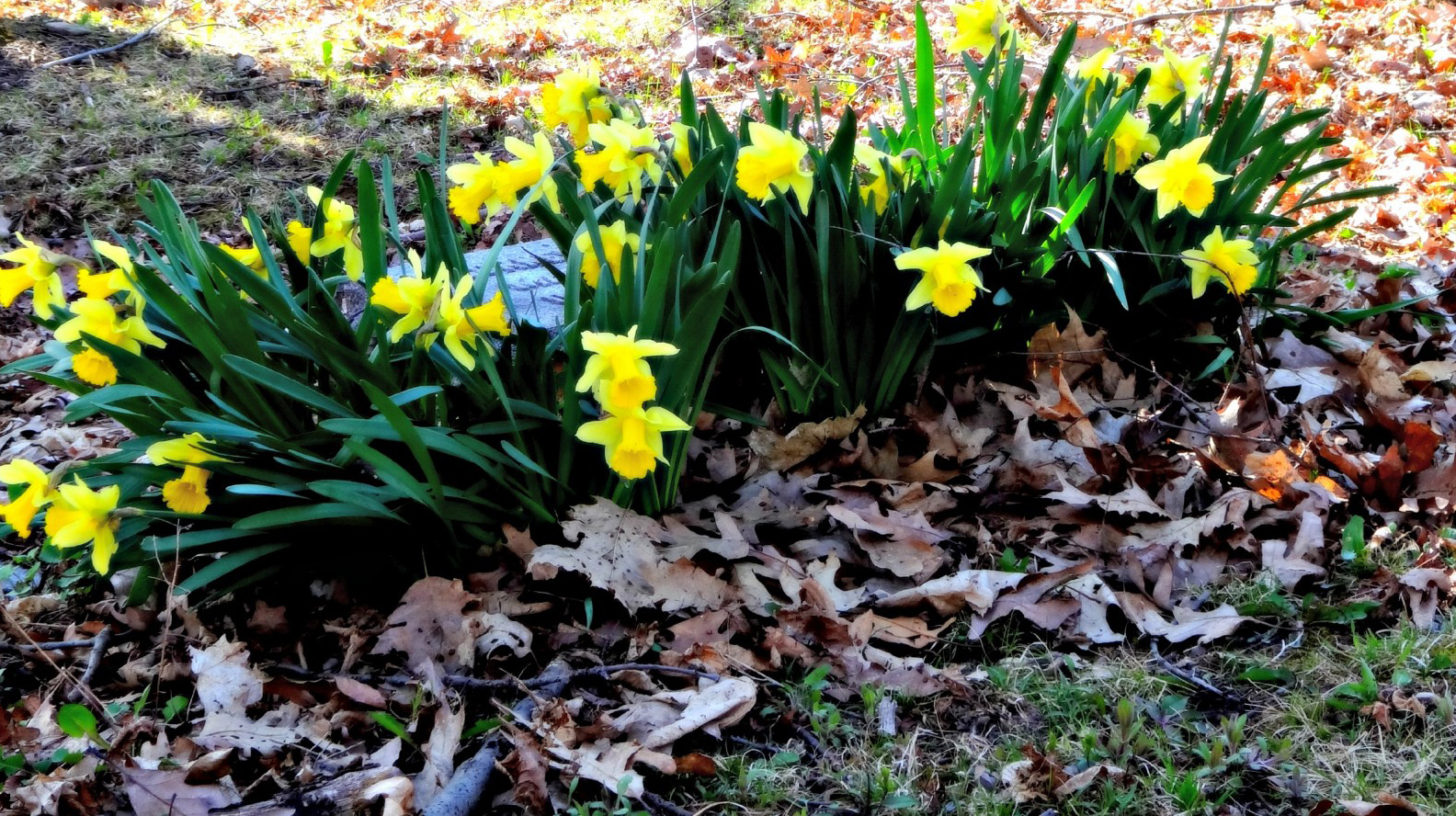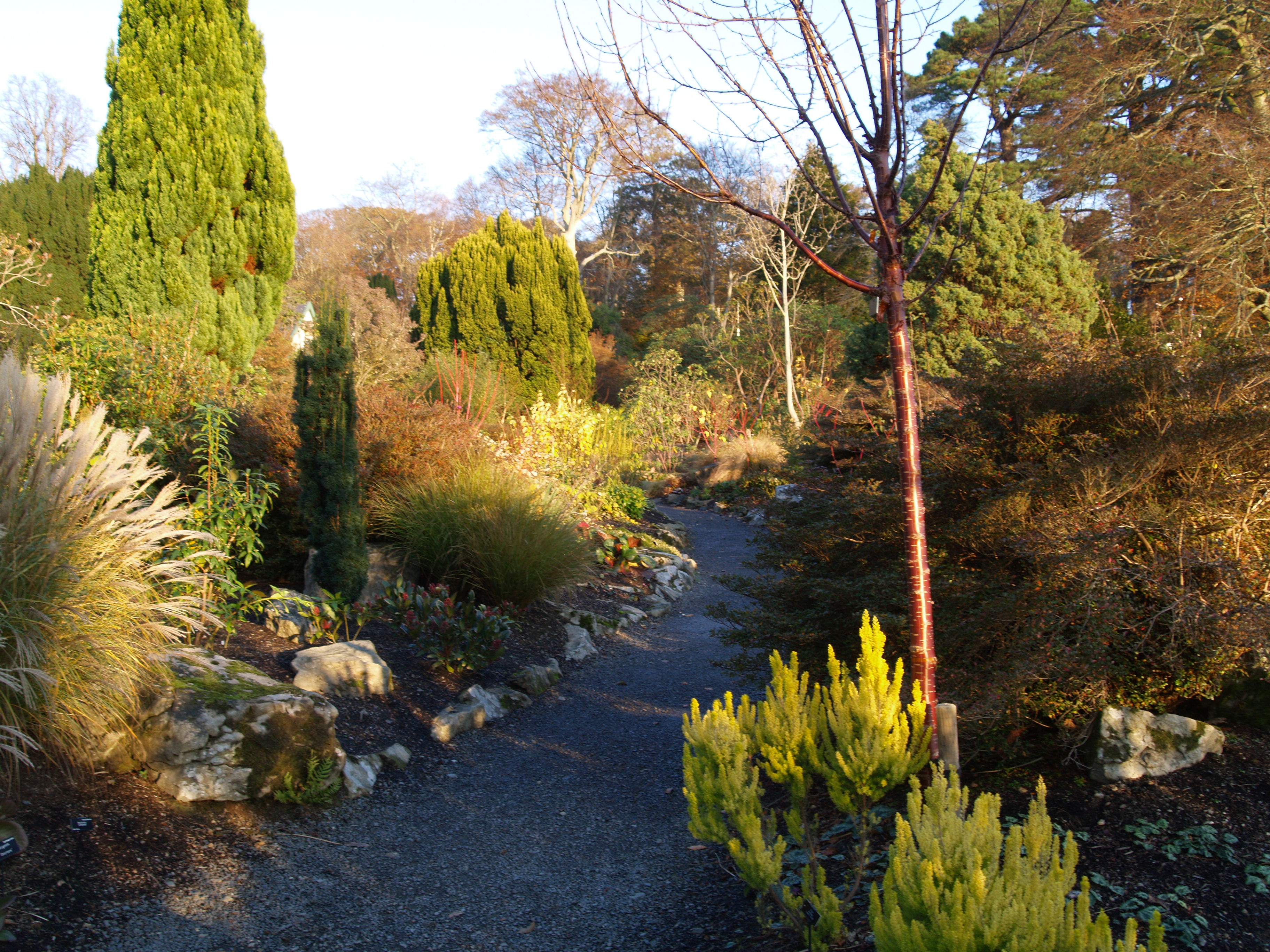By Sandra Nelson
As much as I love plants and gardening, I have always felt that my gardens were — to put it bluntly — markedly mediocre. The individual plants were lovely, but somehow they just didn’t fit together to make the dramatic impact I dreamed of. So, with all of the extra time I have right now, I’m trying to figure out how to improve them by learning more about designing borders and beds.
The very first thing that I learned was that I didn’t really know the difference between a bed and a border. In my geography teacher mind, a border was a just boundary of something, like the invisible boundary separating two states. Turns out I was wrong; a border, horticulturally speaking, is a space that is defined, or anchored, by a backdrop of some sort and is viewed from one side. The backdrop can be a fence, a hedge, a wall or pretty much anything that gives the impression of a solid barrier. In the photo below, notice how the evergreens appear to create a solid barrier behind the border, but in reality leave space for air flow.
A bed, on the other hand, is not anchored at the back and can be viewed from multiple perspectives. While borders tend to be more long and narrow, beds assume many shapes. They can be everything from precise squares and rectangles to softly flowing crescents and teardrops. Both beds and borders however, need to be in proportion to their surroundings. Tiny displays on properties with massive scale will be lost and in contrast, enormous plantings can overwhelm a diminutive property.
Whether planning for a border or a bed, one of the first questions you need to consider is what style you envision. In broad, general terms, gardens are either formal or informal. Formal gardens tend to be very precise in layout, using evenly spaced geometric shapes for beds and straight lines for borders. Plant placement is carefully controlled as are color and shape; these gardens give the impression of gracious yet restrained behavior.
Informal gardens are more free-flowing. They often feature curving beds and exuberant borders which appear to be (but actually aren’t) a random placement of colors, shapes and sizes. Informal gardens have an air of relaxed casualness.
Regardless of the style you prefer, the plants you choose and their placement are important components to the success (or like so many of my attempts — the mediocrity) of both borders and beds. This week let’s spend time thinking about borders.
Although it’s tempting to begin planning a border with a buying trip at the local nursery, this isn’t the best path to success.
Instead, it’s better to take time to think about what will give year round structure and interest to the garden and where to position it. Plants with architectural form or unique characteristics like peeling bark or attractive seed pods can keep the border from looking empty or forlorn when it’s not in magnificent bloom. In a larger space, consider adding a few evergreens for winter interest — and to give needed shelter to beneficial insects, birds and other wildlife.
Once the structural elements are in place, then the challenge of selecting and positioning just the right combination of plants begins. Dan Nelson, lead designer at Embassy Landscape Group, compares designing a border to putting together a giant puzzle. “There are many interlocking pieces that need to fit together to create an unforgettable picture. You need to select plant species that fit the style you are imagining — formal, controlled growth or casual forms spilling onto pathways. You need to think about what blooms when so there is always a
focal point. You need to make sure that colors work well together and to include contrasting shapes and textures of both blossoms and foliage.
You need repetition to create visual unity but also change to avoid monotony. On top of that, the plants you select need to have the same environmental requirements. It can feel overwhelming at times.”
Dan further explained that because borders are viewed from only one side they are most commonly designed with the taller plants at the back, medium-sized plants clustered in the middle and shorter ones toward the front. To avoid the “tin-soldier” effect, he suggests positioning  plants in groupings of at least three to five plants rather than neat rows of single plants. Allow groups to drift into one another both within and across size categories. As the plants grow and fill in the space, the groupings will create strong visual impact while giving a fluid feel to the bed that mimics the natural shape of the skyline.
plants in groupings of at least three to five plants rather than neat rows of single plants. Allow groups to drift into one another both within and across size categories. As the plants grow and fill in the space, the groupings will create strong visual impact while giving a fluid feel to the bed that mimics the natural shape of the skyline.
Finally, Dan offered this piece of advice. “Professional designers can give you guidance, but your garden is really for your own enjoyment. Plant what makes you happy today…and if you find over time that your tastes change, that you don’t like it anymore, then you have an opportunity to explore new ideas and try new things. And what could be better than that?”







